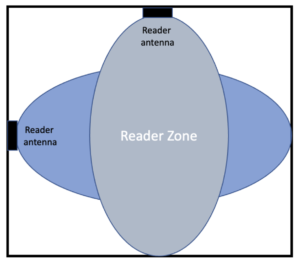We need your help on an RFID concept. We are working on a project to create an environment in which multiple tags (at least 100) could be read in one shot. However, we are unable to do so and are getting results in a more dynamic way with 70 percent accuracy. Could you help me with this? Thank you.
—Sai Krishna
= = =
Sai Krishna,
You have not provided enough information for us to determine what issues you are facing. Assuming you are using passive UHF RFID tags, there could be several different factors affecting your ability to read all of the tags. These could include:
- The tags being detuned by the material they are on: If some of the tags are on metal objects but are not designed for use on metal, that could cause the tags to be detuned and not be read.
- Orientation of the tag antenna to the reader antenna: If you are using a linear-polarized antenna, the reader antenna sends out energy in a narrow beam. If the tags have dipole antennas and are not oriented properly, it will be difficult to read those tags. When tags are in random orientation, you need to use a circular-polarized reader antenna and tags with antennas designed for reading in any orientation.
- Insufficient reader antenna coverage: Circular-polarized readers put our energy in the shape of an American football. The energy is at a small point at the antenna, expands out and then tapers off. If you have a square room with tags in all areas, and you only have two antennas, you will not give sufficient coverage to read all the tags. I've drawn a quick overhead view of a room with two reader antennas on adjacent walls, which you can see below. Tags in the shaded area will be read, whereas those in the white areas will not.
- Null spots in the read field: If the tags are stationary, some may be in null spots—essentially, holes in the read field where there is no energy to power up the tag. It's unlikely that 30 percent of the tags are in null spots, but it could be contributing to the low read rates. If tags are moving, they will pass through a null spot and be read.
If you have already addressed these issues properly, then there could be problems with the quality of the reader, antennas or tags that you have deployed. In generally, you should be able to read 99 percent of tags consistently in free air or on RF-friendly materials.
Mark Roberti
Founder and Editor
RFID Journal

Previous Post Can RFID Assist in Organized Disaster Relief During a War or Natural Disaster? »
